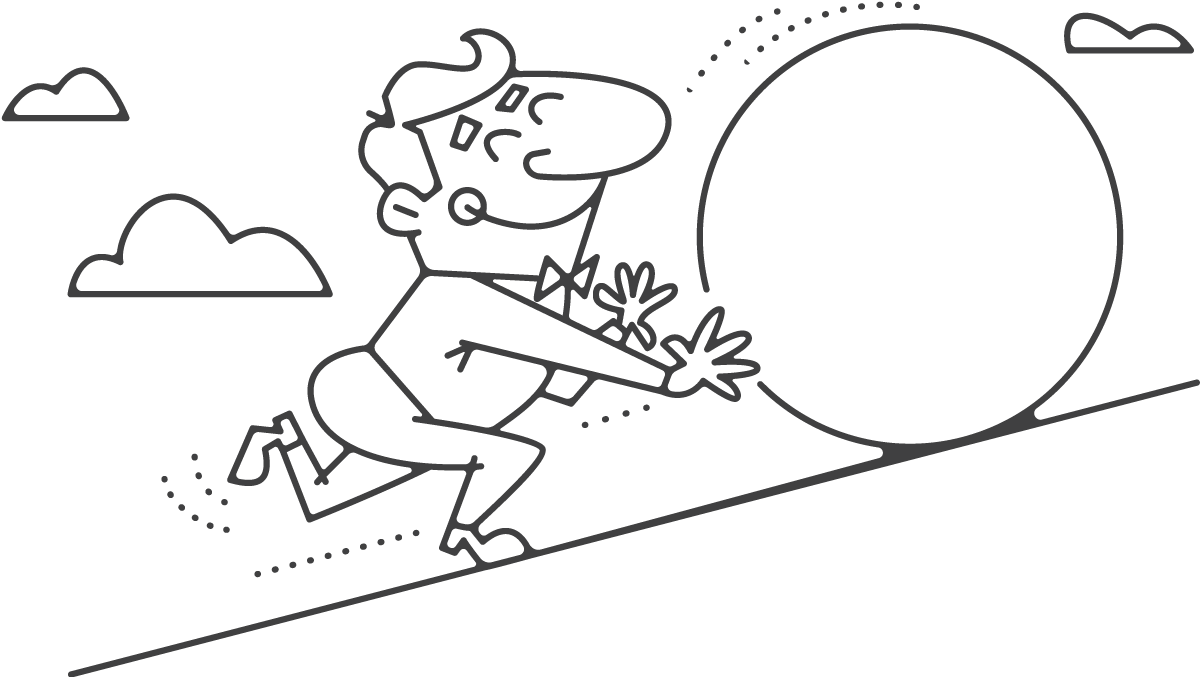Thanks to natural cycles every year we have become very accustomed to the changing of seasons and can always expect them. These seasons come and go, and come and go again.
As a business, you can bet on having an ebb and flow of revenue, productivity, and traffic. These business aspects are subject to changing seasons since they rely on markets and the humans that make up those markets. Just as we may have thriving seasons, we will most certainly have slow seasons.
The Tale of Two Businesses
During these slow seasons, there seem to be two kinds of businesses. One kind are those who become afraid and begin to withdraw from their growth efforts. They may stop spending marketing dollars or perhaps enter a state of sales paralysis as they can’t solve the riddle of why no one is buying. Ultimately, some become depressed and just give up.
The other kind are businesses who see this time as an opportunity. A chance to invest further into the business and capture more of the market by being proactive. So when the market starts heating up again, they are ready. I’ve seen this happen in drastic examples like the year 2020. Businesses rebranded, increased marketing, and pushed harder during a very desolate time for many. They ultimately came out on top and as the global economy recovered they absorbed more than their competitors. Bravo to these businesses that took on the risk and gained the reward.
In both of these camps, they had the choice to push forward or withdraw. Both had no control over the market and only control of what their business could do. They had the choice of offense or defense. In my perspective, these two options show the difference of an abundant mindset versus a scarce mindset. One is restricted by trying to conserve while the other is open to pushing forward. We sometimes view the latter as being “risky” yet — as we see in my 2020 example — there is risk for not doing anything too. There is risk in being stagnant and missing out on the potential for reward and future opportunities.
Considering this in tandem with the fact that businesses and markets go through seasons, the stagnant decision seems to carry the most risk. 2020 may be an extreme condition, but we see this in the typical seasons of any business anyway. Ultimately, a slow season is no excuse to not invest in your business. I will relate this to an effective financial investment strategy called “dollar-cost averaging.”
Dollar-Cost Averaging
Financial markets are always up or down; they have great seasons and bad seasons. People who trade stocks will try to time the markets and follow the cliche of “buy low, sell high!” — however this fallacy leads to a portfolio’s demise in 99% of cases. Why is this? Simply put, you can’t time the market. This fallacy is the same application that I see businesses do during “slow seasons.”
Luckily, the “dollar-cost averaging” investment approach in the markets is the remedy for this deadly fallacy. Dollar-cost averaging is a strategy by which you invest the same amount on a recurring cycle no matter what. Doesn’t matter if the stocks are up or if they are down or flat. You invest the same amount every time. Could be daily, weekly, or monthly all that matters it that you consistently invest the same at the same time. Consistent investment no matter what. Dozens of studies have proved that dollar-cost averaging results in better portfolio performance and returns.
“A constant dripping hollows a stone.” – Ancient Proverb

Constantly Consistent
This same mentality is how we should approach business. A consistent investment no matter if things are up or down. We must use every opportunity to invest in the business. This is not different from investing in the market; it is only a more direct path. You can’t time when the next person walks in to buy a product or decides to contact you for a quote. Why do we believe we can time the market with our business investment strategy? Consistency is key to growth and thriving as a business because it forces us to press forward. If you are pushing a boulder to get from Point A to Point B across a valley and come to a steep hill, simply ceasing to push the boulder will not get you anywhere. You need to continue to push the boulder, but now up an incline for a season though it will just be more difficult and straining.
A consistent investment in our brand is a consistent investment in our business and its ability to thrive. Whether that is brainstorming ideas, brand experience refinements, updating your brand’s identity, reviewing your marketing materials, or examining patterns, these incremental and sometimes large adjustments prepare you for success.
“Luck Is What Happens When Preparation Meets Opportunity” – Seneca

